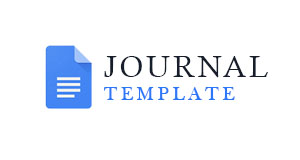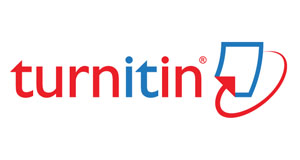PERAN MANAJERIAL SUMBER DAYA MANUSIA SEBAGAI KEUNGGULAN BERSAING DALAM MENINGKATKAN KINERJA ORGANISASI YANG BERKELANJUTAN
Abstract
Abstract
The chemical manufacturing sector is one of the supporters of the domestic economy which contributes to the value of domestic exports of 6.41% of total exports. However, in the last 3 years there was a significant decrease in production volume which caused the growth of the chemical industry sector to only reach 3.48%, this value is still below the national economic growth. This shows the importance of competitive advantage in facing global competition. Therefore, this study was conducted to examine the indicators that influence competitive advantage viewed from the perspective of human resources by using managerial functions on sustainable organizational performance by using environmental, social and economic dimensions. The study was conducted in the chemical manufacturing industry sector in Banten Province of 110 respondents with criteria as managerial level or decision making with a minimum working period of 2 years and using a purposive sampling method. The analytical method uses Smart PLS 3 against 4 indicators of competitive advantage and 28 indicators of organizational performance that is sustainable. The results of the outer model show that all indicators of competitive advantage can build latent variables, while of 28 indicators of sustainable organizational performance there are 3 indicators that have loading factors below 0.70, so that only 25 indicators are able to build latent variables. The inner model results show that the model built has good goodness of fit, while the results of the hypothesis test show a significant influence between the variables of competitive advantage on sustainable organizational performance with a magnitude of influence of 50.3%.
Keywords: Managerial function, Competitive Advantage, Sustainable Organizational
Performance.
Full Text:
PDFReferences
Agha, S., Alrubaiee, L., & Jamhour, M. (2011). Effect of Core Competence on Competitive Advantage and Organizational Performance. International Journal of Business and Management, 7(1). https://doi.org/10.5539/ijbm.v7n1p192
Aisyah, S., & Saputra, J. (2019). The sustainability of solid waste management on Kapas Island, Terengganu, Malaysia. International Journal of Innovation, Creativity and Change, 9(2), 241–249.
Astina, J., Tisnawati, E., & Yudo, H. (2019). The Implementation of Resource- Based View in Enhancing the Reputation of Dive Operators to Increase Dive Tourist ’ s Trust in Indonesia. 9(6).
Awaad, et al. (2013). Competitive Priorities and Competitive Advantage in Jordanian Manufacturing. Journal of Service Science and Management, 6, 69–79.
Barber, N. A. (2014). Profiling the Potential “Green” Hotel Guest: Who Are They and What Do They Want? Journal of Hospitality and Tourism Research, 38(3), 361–387. https://doi.org/10.1177/1096348012451462
Barney, J. B. dan Hesterly, W. . (2008). Strategic Management and Competitive Advantage: Concepts and Cases, ED 2. New Jersey : Pearson Prentice Hall.
Barney, J.B., & Clark, D. N. (2007). Resource-based theory: Creating and sustaining competitive advantage. Oxford, UK: Oxford University Press.
Barney, J. (1991). Firm Resources and Sustained Competitive Advantage. Journal Management, 17(1), 99–120.
Burhanudin, J., Kartini, D., & Komaladewi, R. (2019). Innovation , Competitive Advantage and Marketing Performance of Vocational Higher Education in Private Polytechnics in Indonesia. 9(5), 237–251.
Cantele, S., & Zardini, A. (2018). Is sustainability a competitive advantage for small businesses? An empirical analysis of possible mediators in the sustainability–financial performance relationship. Journal of Cleaner Production, 182, 166–176. https://doi.org/10.1016/j.jclepro.2018.02.016
Cegarra-navarro, J. G., Reverte, C., & Eduardo, G. (2016). The in fl uence of corporate social responsibility practices on organizational performance : evidence from Eco-Responsible Spanish fi rms. 112, 2870–2884. https://doi.org/10.1016/j.jclepro.2015.09.128
Chang, R. D., Zuo, J., Zhao, Z. Y., Zillante, G., Gan, X. L., & Soebarto, V. (2017). Evolving theories of sustainability and firms: History, future directions and implications for renewable energy research. Renewable and Sustainable Energy Reviews, 72(January), 48–56. https://doi.org/10.1016/j.rser.2017.01.029
Chin, W. W. (1995). Partial Least Squares is to LISREL as Principal Components Analysis is to Common Factor Analysis. Technology Studies, 2, 315–319.
Dessler, G. (1997). Manajemen Sumber Daya Manusia. Jakarta: Prehallindo.
Elkington, J. (1997). Cannibals With Forks: The Triple Bottom Line of 21st Century Business. Oxford: Capstone Publishing Ltd.
Fraj, E., Matute, J., & Melero, I. (2015). Environmental strategies and organizational competitiveness in the hotel industry: The role of learning and innovation as determinants of environmental success. Tourism Management, 46, 30–42. https://doi.org/10.1016/j.tourman.2014.05.009
Hall, J. K., Daneke, G. A., & Lenox, M. J. (2010). Sustainable development and entrepreneurship: Past contributions and future directions. Journal of Business Venturing, 25(5), 439–448. https://doi.org/10.1016/j.jbusvent.2010.01.002
Harjanti, S. (2004). Menciptakan Keunggulan Bersaing yang Berkelanjutan Melalui Manajemen Sumber Daya Manusia. Jurnal Ekonomi Dan Kewirausahaan, 4(1), 41–55.
Henseler, J., Ringle, C. M., & Sinkovics, R. R. (2009). The Use of Partial Least Squares Path Modeling In International Marketing. New Challenges to International Marketing Advances in International Marketing, 20, 277–319.
Hristov, I., Chirico, A. (2019). The Role of Sustainability Key Performance Indicators (KPIs) in Implementing Sustainable Strategies. Sustainability Journal, 11, 1–19.
Izuchukwu, et al. (2014). Employee’s Perception of Change Effect as a Competitive Advantage on Nigeria Banking Industry: An Empirical Analysis. Procedia Social and Behavioral Science, 150, 281–290.
Jovane, F.; Westkämper, E.; Williams, D. (2008). The ManuFuture Road: Towards Competitive and Sustainable High-Adding-Value Manufacturing. Springer, Berlin, Germany.
Li, S., et al. (2006). The impact of supplychain management practices on competitive advantage and organizational performance. Omega The International Journal of Management Science, 34, 107–124.
Li & Liu. (2012). Dynamic capabilities, environmental dynamism, and competitive advantage: Evidence from China. Journal of Business Research, xx(xx), 1–7.
Lin & Chen. (2017). Determinants of green competitive advantage: the roles of green knowledge sharing, green dynamic capabilities, and green service innovation. Qual Quan, 51, 1663–1685.
Lopez-Gamero, M. D., Molina-Azorin, J. F., & Claver-Cortes, E. (2011). The relationship between managers’ environmental perceptions, environmental management and firm performance in Spanish hotels: A whole framework. International Journal of Tourism Research, 13(2), 141–163. https://doi.org/10.1002/jtr.805
Lorenzo, et al. (2018). The competitive advantage in business, capabilities and strategy. What general performance factors are found in the Spanish wine industry? Science Direct, 1–15.
Mahdi, et al. (2018). Knowledge management processes and sustainable competitive advantage: An empirical examination in private universities. Journal of Business Research, 1–15.
Ringle, C. M., Sarstedt, M., & Straub, D. W. (2012). A Critical Look at the Use of PLS-SEM in MIS Quarterly. MIS Quarterly, 36(1), 3–14.
Rybakovas, E. (2015). Country-Specific Competitive Advantages of Manufacturing Sector Firms in Eastern EU Member States. Procedia - Social and Behavioral Sciences, 213, 217–222. https://doi.org/10.1016/j.sbspro.2015.11.429
Sharma and Correa. (2003). Resource-Based View of Proactive Corporate Environmental. Academy, The Review, Management, 28(1), 71–88.
Sigalas, C. (2015). Competitive advantage: the known unknown concept. Management Decision, 53(9), 2004–2016.
Staniškis, J. K., & Arbačiauskas, V. (2009). Sustainability Performance Indicators for Industrial Enterprise Management. Institute Environmental Engineering, Kaunas University of Technology, Lithuania, 2(2), 42–50. https://doi.org/10.5755/J01.EREM.48.2.13
Suprihatmi, S. W. (2008). Membangun Keunggulan Bersaing Melalui Manajemen Sumberdaya Manusia. Jurnal Ekonomi Dan Kewirausahaan, 8(1), 38–50.
Synnestvedt, T., & Schaltegger, S. (2002). The link between `green’ and economic success: environmental management as the crucial trigger between environmental and economic performance. Journal of Environmental Management, 65(3), 339–346. https://doi.org/10.1006/jema
DOI: https://doi.org/10.24952/tijaroh.v6i1.2287
Refbacks
- There are currently no refbacks.
Copyright (c) 2020 At-tijaroh: Jurnal Ilmu Manajemen dan Bisnis Islam

This work is licensed under a Creative Commons Attribution-ShareAlike 4.0 International License.















